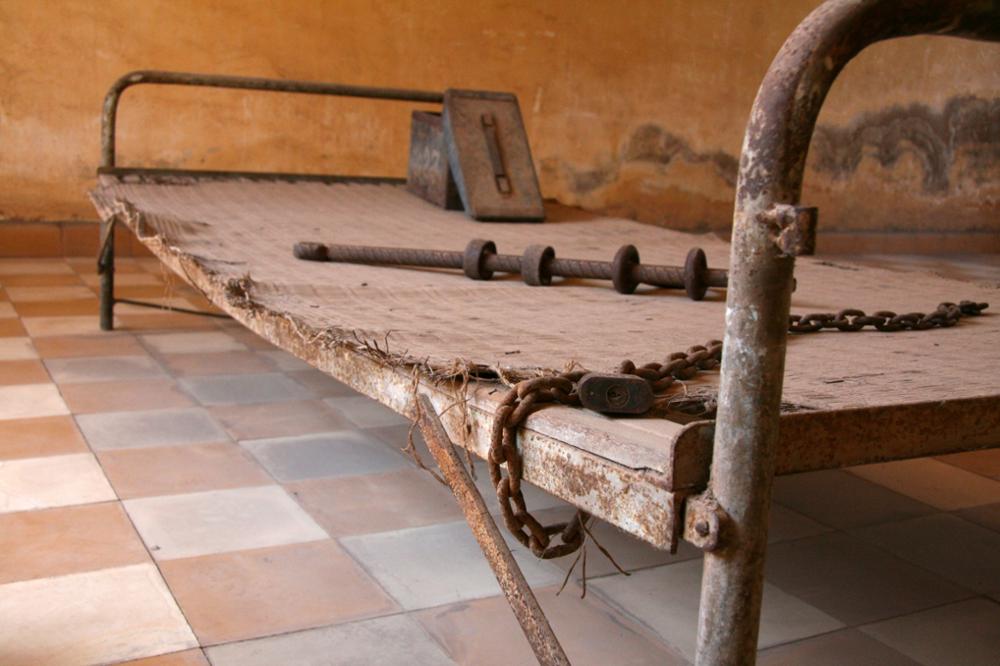
The Tuol Sleng Museum: A former torture prison
The Tuol Sleng Genocide Museum, located in Phnom Penh, offers a remarkable and powerful journey through the darkest hours of Cambodia's history. The narrative of this Khmer Rouge detention and torture center is skillfully conveyed, aiming to prevent this place from being forgotten: a small establishment where, in just two and a half years, over 18,000 people perished. A visit lasting 3 to 5 hours is essential during any stay in Cambodia.
Cafés, restaurants, souvenir shops, apartments, and a museum are all found in the area today… and, above all, the streets are full of life. The Tuol Sleng neighborhood of today is the complete opposite of what it was 40 years ago. On April 17, 1975, the Khmer Rouge arrived in Phnom Penh and emptied the capital in less than a week. "The new people," as the Khmer Rouge leaders called the city dwellers, had to migrate to the countryside to form labor cooperatives. Phnom Penh became literally empty — a deserted urban space.
A few places, however, stand out as exceptions, such as the Royal Palace, where Cambodia’s former king Norodom Sihanouk and his family were held. Another is the Tuol Svay Prey High School, located in the Tuol Sleng neighborhood. This was a symbol of education and success, where many capital city students came to take their baccalaureate exams. In August 1976, the S-21 prison was established there. From that moment, the students were replaced by prisoners, and the teachers were driven out. Kang Kek Leu, a former mathematics teacher, took charge of the penitentiary. He would later be known as Douch.
In the monsoon season of 1976, the windows of the school were sealed, and the desks, chairs, and platforms were removed. Instead, torture beds, cells, chains, and pillories were installed. In just two and a half years, 18,000 people lost their lives, and only 11 survivors were found when the Vietnamese arrived in the capital. These survivors helped establish this museum, carrying with it a heavy but essential memory. Every event that occurred in this facility is carefully detailed in the museum. Texts, testimonies, and photographs support the guide’s words.

A strong and thoughtful narrator
If desired, the visit is guided by a carefully crafted audio guide. The narrator’s calm and composed voice contrasts with the grim setting of your tour. The atmosphere is deeply oppressive, but his voice helps you endure the difficult moments, occasionally inviting you to sit on park benches to catch your breath and collect your emotions.

This thoughtful approach helps maintain focus during the visit. The narrator recounts everything that happened here, from executions to tortures, with the haunting image of prisoners' blood forever staining the place. Former executioners also testify, sharing the same microphone as the 11 survivors. Prominent historical figures from Cambodia’s past, such as Bophana and Vann Nath, passed through S-21, and the guide will explain what happened to them.
Following the guide, the entire tour will take about 3 to 3.5 hours. However, you can explore the top floor of each of the four buildings to deepen your knowledge and observe documents such as historical facts, testimonies, and maps from that era. This extends the visit to 5 hours.